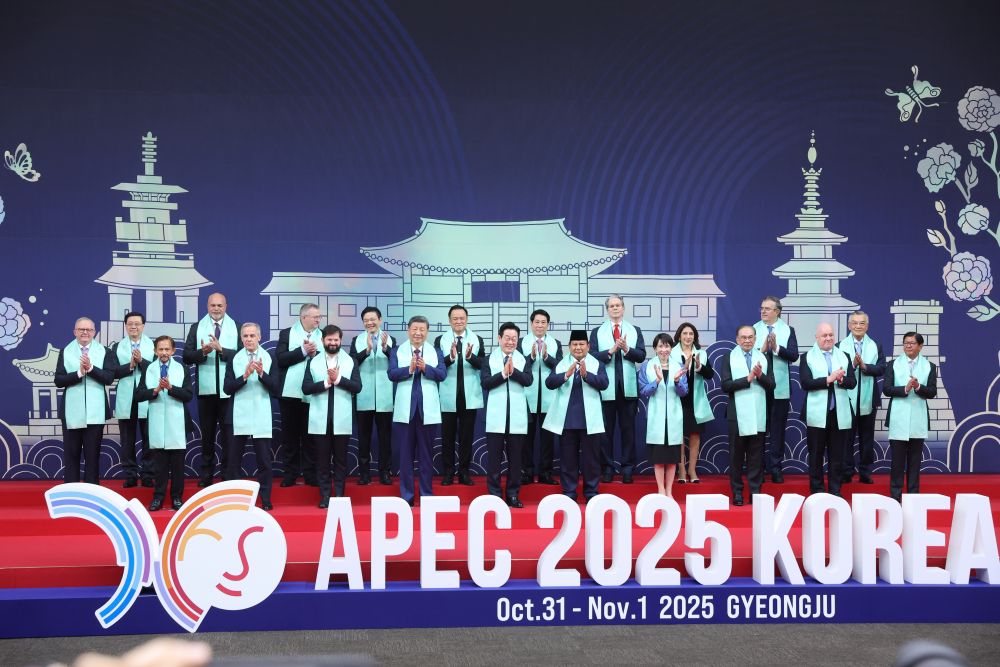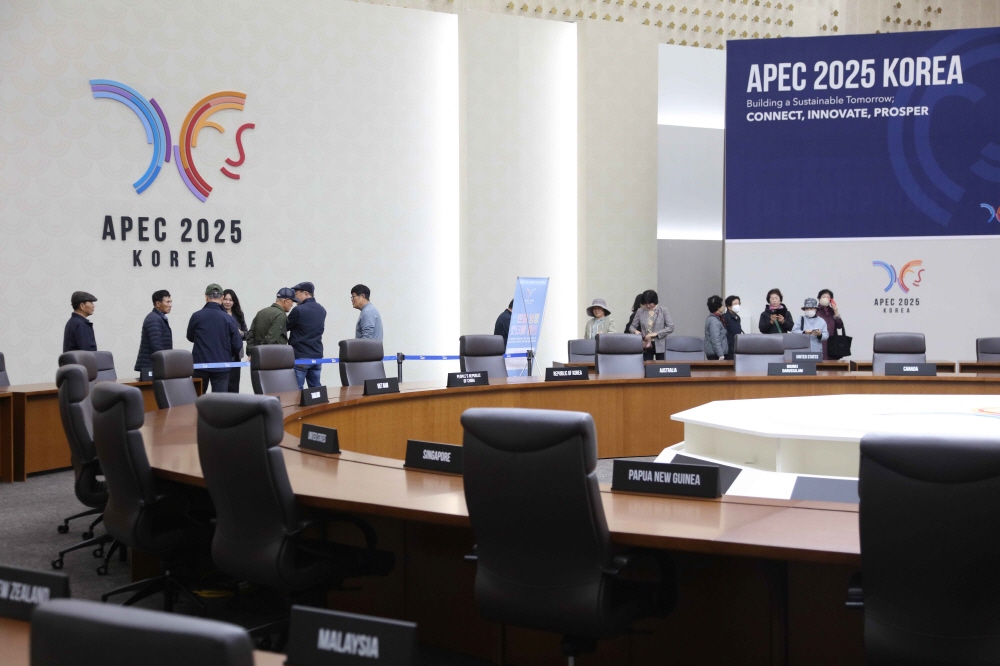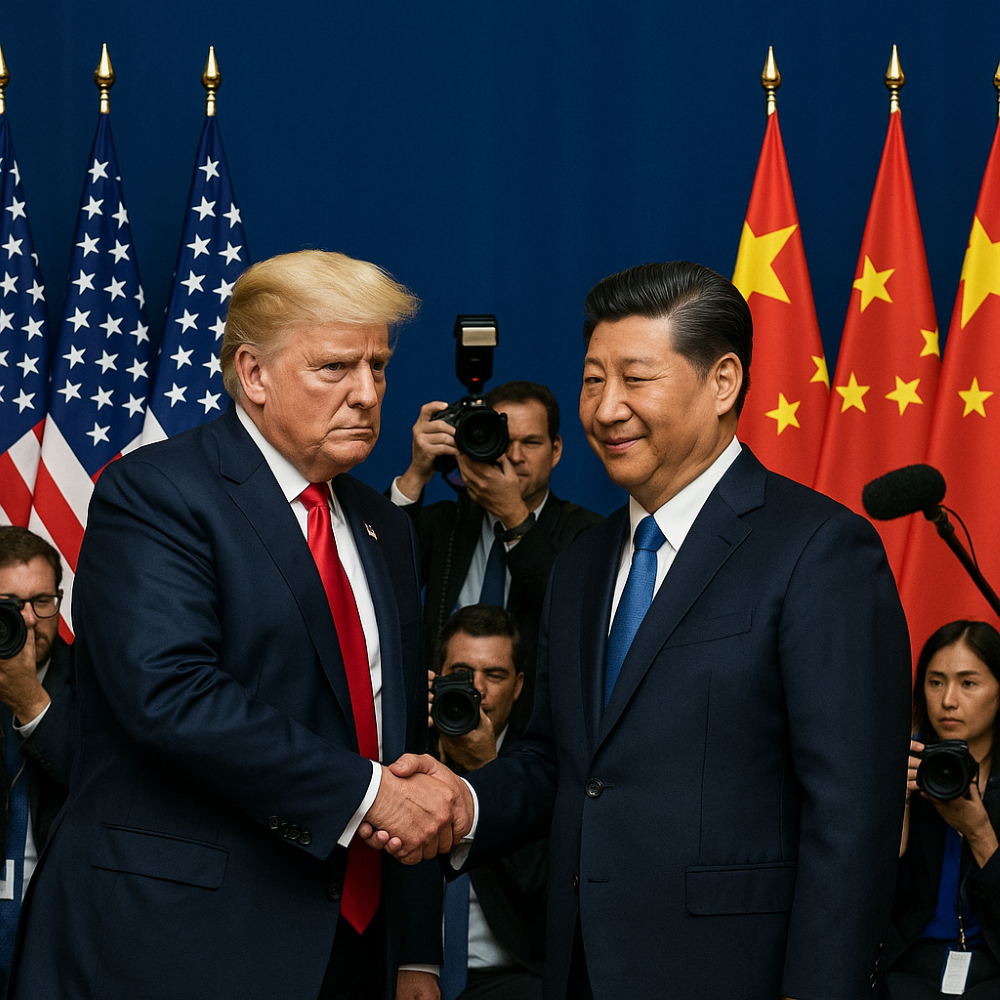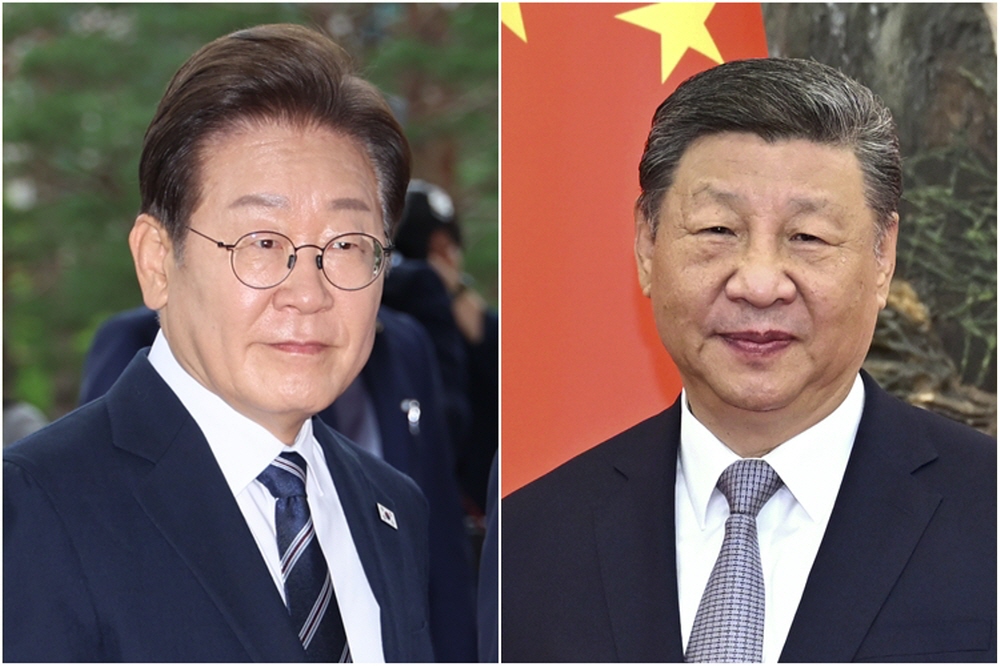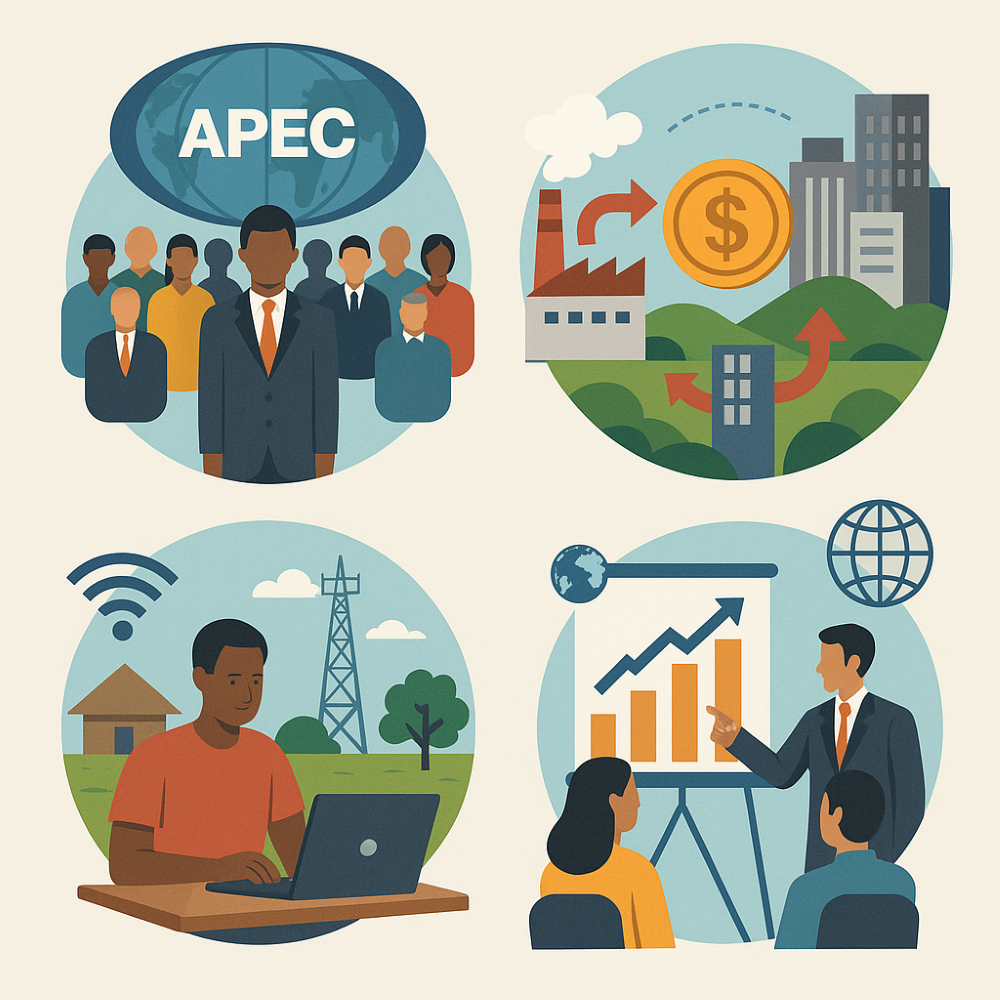
Key Takeaways:
- APEC 2025 reaffirmed commitments to trade, innovation, and digital transformation, but the benefits for developing economies remain uncertain.
- Deep disparities in infrastructure, digital capacity, and institutional readiness mean that many members may struggle to translate the Gyeongju Declaration’s goals into tangible gains.
- Whether APEC delivers meaningful progress will depend on implementation — sustained capacity-building, resources, and political will — not declarations alone.
Introduction
In Gyeongju, the Asia-Pacific economies reaffirmed their commitments to
enhancing trade, innovation, and prosperity. For developing members of the
Asia-Pacific Economic Cooperation (APEC), however, it remains uncertain whether
these initiatives will generate tangible economic benefits.
As APEC leaders convened in Gyeongju from October 31 to
November 1, familiar themes of trade, connectivity, innovation, and shared
prosperity dominated the agenda amid global uncertainties and rising trade
tensions. Their meeting produced the Gyeongju Declaration, centered on three
priorities—Connect, Innovate, and Prosper—and
reaffirmed APEC’s long-standing commitment to cooperation on trade, investment,
and regional economic integration. Yet a pressing question remains: What
tangible benefits will developing APEC economies actually derive?
APEC: History, Mission, and Evolution
To understand the implications of the Gyeongju Declaration,
it is useful to consider APEC’s history and its evolving role in shaping
regional economic cooperation. Since its establishment in 1989, APEC has grown
from a forum of 12 member economies to a robust 21-economy platform. Its
founding mission emphasized the promotion of free trade, regional economic
integration, and dialogue on economic policy challenges. Over the decades, APEC
has facilitated initiatives such as trade facilitation programs, infrastructure
financing, and economic cooperation, which have helped developing economies
navigate global markets, strengthen institutions, and attract investment.
Development disparities among APEC economies
APEC economies exhibit substantial variation in their
levels of development. Of the 21 member economies, seven are highly developed,
while the remaining 14 are considered developing. According to the latest World
Bank data, Singapore has the highest Gross National Income (GNI) per capita
among APEC economies, at $110,344 (constant 2021 international dollars),
whereas Papua New Guinea has the lowest, at $3,735 (constant 2021 international
dollars).
Developing economies themselves display considerable
disparities — from lower-middle-income countries such as Papua New Guinea to
upper-middle-income economies like Indonesia and Thailand. This diversity
shapes human capital, infrastructure, economic diversification, and
institutional capacity, affecting their ability to benefit from APEC
initiatives.
Trade and Investment Opportunities
Over the last decades, APEC has provided developing
economies with avenues to leverage regional integration, trade liberalization,
and investment in strategic sectors. By accessing larger markets, diversifying
exports, and attracting foreign direct investment (FDI), these countries can
stimulate industrial growth, facilitate technology transfer, and deepen
integration into global value chains.
Vietnam, for instance, has seen its manufacturing sector
flourish in part due to trade liberalization efforts encouraged under APEC
frameworks. FDI from APEC members accounts for over 82% of Vietnam’s
accumulated FDI over the past 40 years, supporting technology transfer, skill
development, and participation in global value chains.
Other developing economies have similarly benefited from
FDI. In Indonesia, for example, FDI inflows into manufacturing, infrastructure,
and services have spurred modernization, increased productivity, and integrated
the country more deeply into regional and global value chains. These examples
illustrate the tangible benefits that investment can bring under APEC
frameworks, offering both enhanced growth and opportunities for technological
learning.
Digital Economy and the AI Divide
While traditional trade and investment channels continue to
provide substantial opportunities, the emerging digital economy presents a new
frontier for growth and innovation. APEC has prioritized digitalization and
artificial intelligence (AI) transformation, recognizing their potential to
drive innovation, economic growth, and regional competitiveness.
However, significant gaps persist between member economies.
While advanced members enjoy widespread internet access, robust digital
infrastructure, and strong AI capabilities, many developing economies face
infrastructural bottlenecks, limited digital skills, and uneven connectivity,
which constrain their ability to harness digital technologies for inclusive
growth.
In Papua New Guinea, for example, only 32% of the
population has internet access, leaving nearly 68% offline. Moreover, more than
86% of the population resides in rural areas, where digital infrastructure is
weak and digital literacy initiatives are difficult to scale. These disparities
illustrate a broader digital divide in the Asia-Pacific, which, if left
unaddressed, could exacerbate economic inequalities and limit the benefits that
less developed members derive from digital transformation initiatives.
Capacity-Building as a Development Tool
Addressing these gaps, the Gyeongju Declaration emphasizes
capacity-building initiatives as a key mechanism for fostering equitable
development. From a development perspective, capacitybuilding strengthens
knowledge, skills, institutions, and systems, enabling countries to manage
their development sustainably—in contrast to short-term financial aid.
Through technical assistance, training programs,
knowledge-sharing initiatives, and policy guidance, countries can implement
complex reforms, improve governance, adopt new technologies, integrate more
effectively into global markets, and enhance resilience to economic and
environmental challenges. By focusing on long-term institutional and human
resource development, capacity-building ensures that investments and reforms
yield lasting benefits and broader multiplier effects rather than temporary
gains.
APEC Commitments, Challenges, and Limitations
The Gyeongju Declaration also emphasizes inclusive and
sustainable growth. It stresses that the benefits of prosperity should be
shared across the Asia-Pacific and pledges deeper cooperation to address global
challenges — from energy and food security to environmental pressures and extreme
weather events. Programs supporting SMEs, women’s entrepreneurship, green
growth, and digital inclusion aim to narrow persistent development gaps.
APEC leaders endorsed the AI Initiative (2026–2030), which
focuses on advancing AI transformation and building AI capacities at all
levels. As the host of APEC 2025, South Korea has committed to establishing an
Asia-Pacific AI Center to serve as a regional hub for AI capacity building,
innovation, and information sharing. These initiatives are further anchored in
APEC’s Putrajaya Vision 2040, which commits the region to innovation-driven,
inclusive growth, and seeks to enhance the policy influence of smaller
economies within the forum.
However, APEC’s non-binding commitments, while offering
flexibility, also limit accountability. The Gyeongju Declaration sets an
ambitious agenda, but its impact will ultimately depend on whether members
translate broad statements into concrete action. Many initiatives rely on
voluntary contributions, ad hoc funding, and variable political will rather
than enforceable obligations or measurable benchmarks. This creates an uneven
landscape in which smaller or lessdeveloped economies must rely on goodwill and
alignment of interests.
Stakes for Developing Economies Amid Geopolitical dynamics
The real test lies not in declarations themselves, but in
implementation — whether commitments are backed by resources, technical
support, and follow-through. In a world shaped by rapid digital transformation,
climate pressures, and intensifying geopolitical competition, APEC’s ability to
deliver tangible, equitable benefits to developing members will determine both
the credibility of the Gyeongju outcomes and the forum’s long-term relevance
for developing economies.
Economic integration alone is not the full story; APEC also
functions as a diplomatic arena where developing economies navigate complex
geopolitical dynamics. For many, the forum provides an avenue to assert
independence and highlight collective interests amid rising tensions between
the United States and China. For developing economies, what is at stake goes
beyond market access or investment flows — it is the ability to shape a
regional order that values inclusiveness, sustainability, and resilience, thereby
strengthening their position within regional governance structures.
Shimaa Hanafy is an Associate Professor of Development Economics in the Division of International Studies at Hankuk University of Foreign Studies in Seoul, South Korea. She is also a Research Fellow at the Economic Research Forum (ERF). She earned her doctorate (Dr. rer. pol.) in Economics in 2016 from Philipps-University Marburg, Germany. Dr. Hanafy has received the Ibn Khaldun Prize for Best Paper from the Middle East Economic Association (MEEA) and the Best Young Researcher Award from the School of Business and Economics at Philipps-University Marburg. Her research interests include development and institutional economics, political economy, foreign direct investment, and the economics of conflict and terrorism. Her work has been published in peer-reviewed journals such as Public Choice, Journal of International Trade and Economic Development, Political Research Quarterly, Terrorism and Political Violence, and the European Journal on Criminal Policy and Research.
